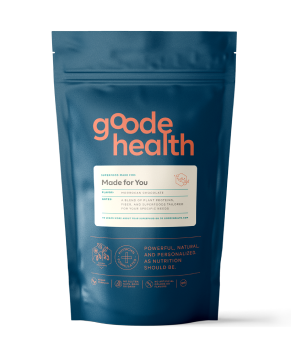by David C. Nieman, DrPH, FACSM
The 2020–2025 Dietary Guidelines for Americans* advise “incorporating 1.5 to 2 cup-equivalents of fruits and 2 to 3 cup-equivalents of vegetables daily. “. But how many do we actually eat? The USDA food consumption surveys find that the average American falls far short—consuming less than 1 cup of fruit and 1.4 cups of vegetables per day. So by missing the mark so widely, what are we missing? Lots! However the biggest missing piece in the American diet are the polyphenols found in fruits and vegetables. What are they?
What Are Polyphenols and What Are They Good For?
Polyphenols are used by plants for protection against sun radiation and invading viruses and bacteria. They also provide the bright colors found in fruits and vegetables and protect us as well. Polyphenols have been linked to many health benefits. Rich sources of polyphenols include all types of berries, cherries, grapes, green tea, plums, citrus fruits, apples, onions, and soy products (Figure 1).
How Much Is the Recommended Daily Intake of Polyphenols?
For optimal health, you should aim for 400 to 500 mg of polyphenols each day. Researchers have studied groups of people that do have high dietary intakes of polyphenols and discovered that they live longer, have less heart disease and diabetes, suffer less from the common cold, maintain better weight, and enjoy better brain health and lowered risk of senility in old age (Figure 2). Studies also show that polyphenols combat oxidative stress and inflammation, helping athletes recover better from hard workouts.
Benefits of Polyphenols and Gut Health
Most of the polyphenols we eat cycle through our large intestines where they are transformed so they can transition from the gut into our bloodstream to amplify health. In the colon, polyphenols activate the growth of important types of bacteria and viruses. The net result is an improved gut microbiome that has been linked to many of the health benefits found in those who eat high amounts of the key nutrient. Polyphenols are one of the very few substances that can robustly transform our microbiomes from a health hazard to producing healthy phenolic compounds and preparing them for entry into our bloodstream.
How Do Polyphenols Lower Blood Pressure and Reduce Heart Disease Risk?
In general, try to eat as many colorful fruits and vegetables as you can each day. Goode Health’s daily smoothie mix includes fruit and green tea extracts to help “fill the polyphenol gap” and ensure that you experience the related health benefits. We don’t make any claims for disease prevention, as required by the FDA, but do have phenomenal targets that show the positive effect. The most vital is blood vessel health. Since phenolics spend their short lives in our body in our blood streams, it’s here that they help lower blood cholesterol and create healthy, bouncy, blood vessels with improved flow and lowered blood pressure, which in turn reduces the risk of heart disease. Arteries travel 60,000 miles in our bodies and so they affect the health of every single organ. Our early pilot studies already show robust changes in blood vessel health in as little as six weeks. Below are some great food sources for polyphenols and answers to commonly asked questions.
Why are polyphenols so important?
They’re the most vital, healthy part of fruits and vegetables with the best link of any nutrients to lowering all causes of death.
How much polyphenols should I get each day?
For optimal health, you should aim for 400 to 500 mg of polyphenols every day in your diet.
Are some polyphyenols better than others?
Yes. We found isoquercetin, Bilberries and Green tea extract to be the most powerful. These are the core polyphenols in Goode Health’s products.
How will my body improve using polyphenols?
First, your microbiome will become much healthier and turn into a ‘factory’ for producing the small phenolic compounds that enter the blood stream. Then your blood vessel health will improve, which in turn improves health throughout your entire body.
How can I be sure I have enough polyphenols in my diet?
Choose nine servings of those at the top of the list (chart below). Or make a smoothie or two of Goode health every day.
Can you take too much polyphenols?
There doesn’t appear to be an upper limit where they pose any risk. But, 600 mg a day is a good top number to shoot for.


